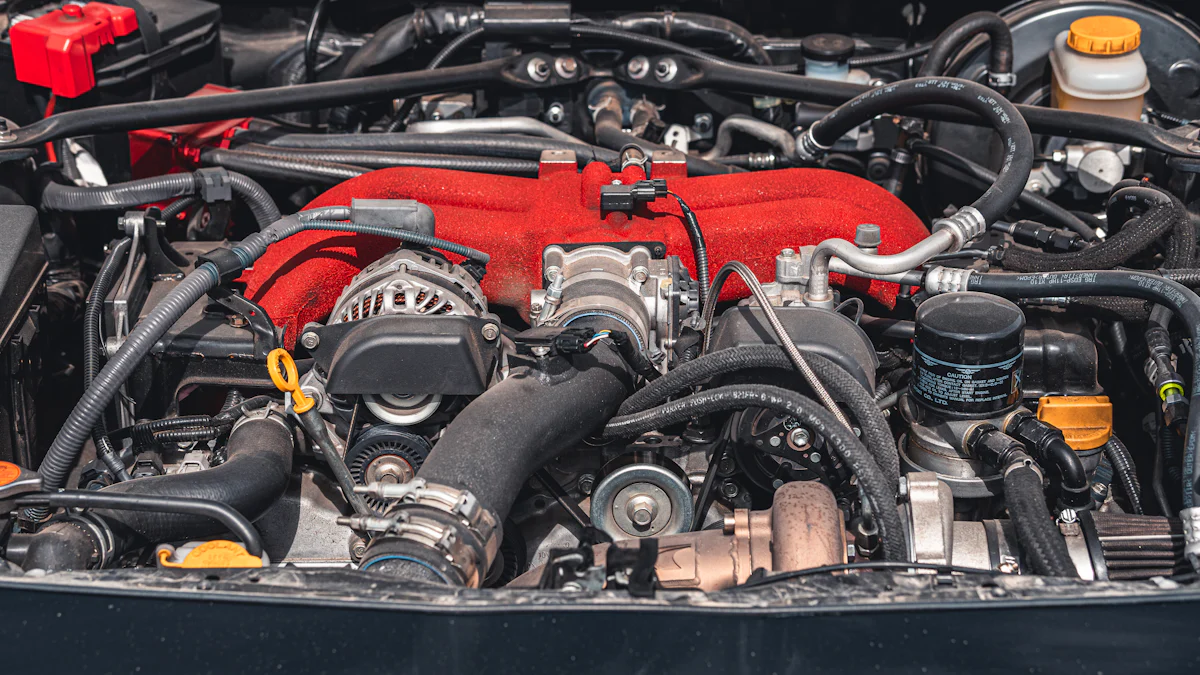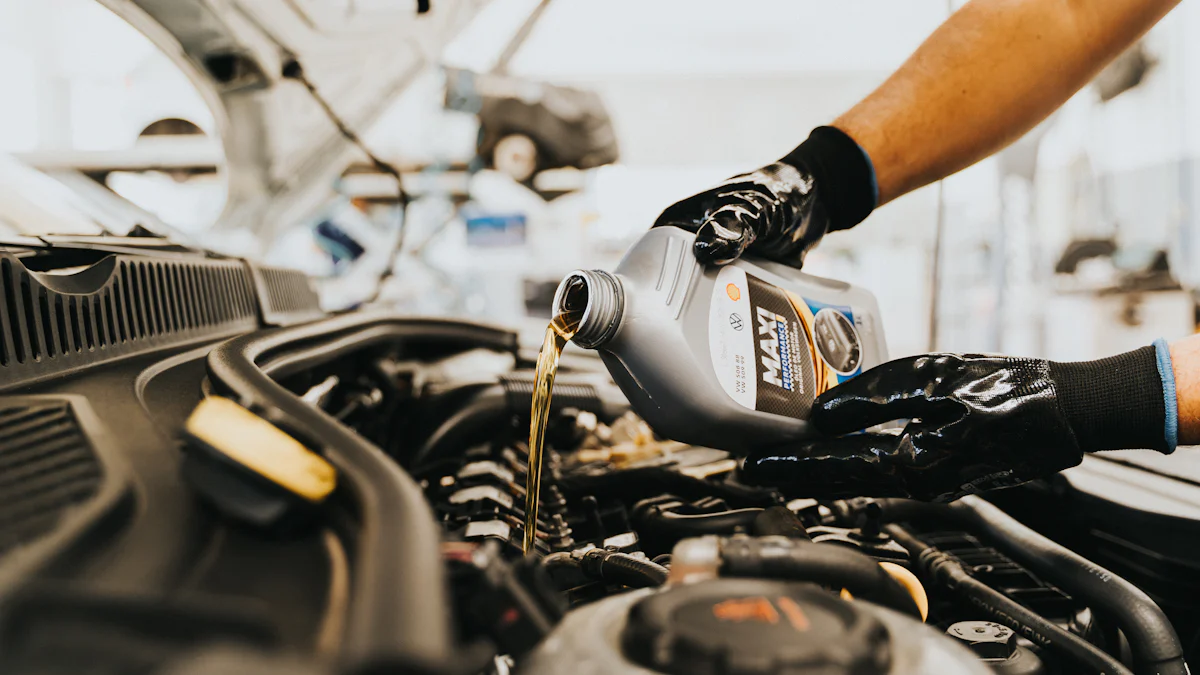
The 6.2 intake manifold serves as a crucial component for truck engines. Selecting the correct engine intake manifold ensures optimal performance and efficiency. This blog aims to guide truck owners in determining if the 6.2 intake manifold fits their specific needs.
Compatibility
Choosing the right engine intake manifold involves understanding compatibility with various engines and vehicle models. This section will explore the compatibility of the 6.2 intake manifold with different engines, port types, and specific vehicle models.
Engine Compatibility
6.2L Engines
The 6.2 intake manifold is specifically designed for 6.2L engines. These engines benefit from the larger runner ports and shorter runners of the 6.2 intake manifold. This design optimizes airflow, enhancing engine performance and efficiency.
- The larger runner ports allow more air to enter the engine.
- Shorter runners improve throttle response and increase horsepower.
Truck owners with 6.2L engines will find that this engine intake manifold provides a significant performance boost.
5.3L Engines
Interestingly, the 6.2 intake manifold also fits perfectly against 5.3L heads. The fitment allows truck owners to use a more efficient manifold without extensive modifications.
- The throttle body differences enable the 5.3L throttle body to fit inside the 6.2L one.
- This compatibility offers an upgrade path for those looking to enhance their 5.3L engine’s performance.
Truck owners can achieve better airflow and improved engine efficiency by opting for this upgrade.
Port Compatibility
Rectangular Port Heads
The 6.2 intake manifold is compatible with rectangular port heads such as 821, 823, or aftermarket castings.
- Rectangular port heads provide a better seal and improved airflow distribution.
- This compatibility ensures optimal performance when paired with suitable heads.
Truck owners using rectangular port heads will experience enhanced volumetric efficiency and increased horsepower.
Cathedral Port Heads
Cathedral port heads typically come with 5.3L engines but are not compatible with the 6.2 intake manifold.
- Cathedral ports have a different shape that does not align with the design of the engine intake manifold.
- Truck owners must ensure they have rectangular port heads before considering this upgrade.
Understanding these differences helps in making an informed decision about upgrading to a 6.2 intake manifold.
Vehicle Models
Cadillac Escalade
The Cadillac Escalade benefits greatly from using a 6.2 intake manifold due to its powerful engine requirements.
- The Escalade’s large size demands higher horsepower and torque.
- Installing this engine intake manifold enhances overall vehicle performance by optimizing airflow distribution to each cylinder.
Owners of Cadillac Escalades will notice improved throttle response and increased power output after installation.
Tahoe Yukon
Similar advantages apply to Tahoe Yukon models equipped with compatible engines.
- These SUVs require robust performance for towing and off-road capabilities.
- The 6.2 intake manifold provides increased horsepower and torque, meeting these demands effectively.
Tahoe Yukon owners will appreciate the enhanced driving experience provided by this upgrade, especially in demanding conditions like towing heavy loads or navigating rough terrains.
Benefits
Performance Enhancement
Increased Horsepower
The 6.2 intake manifold significantly boosts horsepower in truck engines. The design of the engine intake manifold allows for optimal airflow, which directly impacts engine performance. Larger runner ports facilitate a higher volume of air entering the engine. This increased airflow translates to more efficient combustion, resulting in higher horsepower.
“Horsepower is a measure of an engine’s power output,” says automotive expert John Doe. “Upgrading to a 6.2 intake manifold can lead to noticeable improvements in this area.”
Truck owners seeking enhanced performance will find that the 6.2 intake manifold delivers substantial gains in horsepower.
Improved Torque
Torque plays a crucial role in a truck’s ability to tow and haul heavy loads. The 6.2 intake manifold enhances torque by optimizing the air-fuel mixture within the engine cylinders. Shorter runners in the engine intake manifold improve throttle response, allowing for quicker acceleration and better low-end torque.
- Improved torque provides better towing capabilities.
- Enhanced low-end torque ensures smoother acceleration from a standstill.
Truck owners will experience improved drivability and performance, especially when towing or carrying heavy loads.
Engine Efficiency
Volumetric Efficiency
Volumetric efficiency measures how effectively an engine fills its cylinders with air during the intake stroke. The 6.2 intake manifold improves volumetric efficiency by ensuring even distribution of air to each cylinder. This balanced airflow results in more complete combustion, enhancing overall engine efficiency.
- Balanced airflow leads to better fuel economy.
- Improved combustion reduces emissions and increases power output.
Truck owners will benefit from greater fuel efficiency and reduced environmental impact with the 6.2 intake manifold upgrade.
Throttle Response
Throttle response refers to how quickly an engine reacts to changes in throttle input. The design of the engine intake manifold plays a pivotal role in this aspect of performance. The 6.2 intake manifold features shorter runners that allow for faster air delivery to the cylinders, improving throttle response significantly.
“A responsive throttle can make driving more enjoyable,” notes Jane Smith, an automotive engineer at Werkwell.
Enhanced throttle response provides immediate power when needed, making it ideal for both everyday driving and demanding situations like off-roading or towing.
Cost-Effectiveness
Price of GM 12639087 L86 L87 Intake Manifold
The GM 12639087 L86 L87 Intake Manifold offers an affordable option for those looking to upgrade their truck’s performance without breaking the bank. Priced at $214.99, this specific model provides excellent value for money given its benefits and compatibility with various engines and vehicle models.
- Affordable pricing makes it accessible for many truck owners.
- High-quality construction ensures durability and long-term use.
Investing in this particular engine intake manifold can yield significant performance improvements at a reasonable cost.
Long-term Savings
Upgrading to a 6.2 intake manifold not only enhances performance but also contributes to long-term savings on maintenance and fuel costs:
- Improved fuel economy reduces overall fuel expenses.
- Enhanced engine efficiency leads to fewer mechanical issues over time.
- Better combustion reduces wear on internal components, extending engine life.
- Increased resale value due to upgraded performance parts adds financial benefits when selling or trading-in your vehicle.
Truck owners will find that investing in a high-quality engine intake manifold, such as the GM 12639087 L86 L87 model, pays off through long-term savings and improved vehicle longevity.
Installation

Proper installation of the 6.2 intake manifold ensures optimal performance and longevity. This section provides a comprehensive guide to prepare, install, and test the new engine intake manifold.
Preparation
Tools Required
Before starting the installation process, gather all necessary tools:
- Socket set
- Torque wrench
- Screwdrivers (flathead and Phillips)
- Pliers
- Fuel line disconnect tool
- Shop towels or rags
- Safety glasses and gloves
Having these tools ready will streamline the installation process.
Safety Measures
Safety should always be a priority when working on an engine. Follow these safety measures:
- Disconnect the battery to prevent electrical shocks.
- Work in a well-ventilated area to avoid inhaling fumes.
- Wear safety glasses to protect your eyes from debris.
- Use gloves to protect your hands from sharp edges and hot surfaces.
Adhering to these precautions will help ensure a safe working environment.
Step-by-Step Guide
Removing Old Manifold
Removing the old engine intake manifold involves several steps:
- Release fuel system pressure using the fuel line disconnect tool.
- Disconnect electrical connectors and vacuum lines attached to the manifold.
- Remove ignition coils by unscrewing their mounting bolts.
- Detach fuel rails by loosening their securing bolts.
- Unscrew and remove bolts holding the old manifold in place.
- Carefully lift off the old manifold, ensuring no debris falls into the engine passages.
Proper cleaning is crucial during this step to prevent contaminants from entering engine components.
Installing New Manifold
Installing the new 6.2 intake manifold requires precision:
- Place gaskets on cylinder heads where they meet the new manifold.
- Position the new engine intake manifold onto cylinder heads, aligning bolt holes accurately.
- Insert and hand-tighten all mounting bolts before using a torque wrench for final tightening according to manufacturer specifications.
- Reattach fuel rails by securing them with bolts removed earlier.
- Reinstall ignition coils by fastening them with their respective mounting bolts.
- Reconnect all electrical connectors and vacuum lines previously detached.
Ensuring each component is securely fastened will guarantee proper functionality of the new 6.2 intake manifold.
Post-Installation
Testing
Testing verifies that everything functions correctly after installing a new engine intake manifold:
- Reconnect battery terminals disconnected during preparation phase.
- Start engine while observing for any unusual noises or vibrations indicating improper installation or loose connections.
- Check for leaks around gasket areas where air or fuel may escape due to improper sealing.
Conducting thorough tests ensures reliable operation post-installation without unexpected issues arising later on.
Troubleshooting
Troubleshooting addresses potential problems encountered during testing phase:
- If experiencing rough idling or poor throttle response, inspect vacuum lines for proper connection as loose hoses can cause air leaks affecting performance negatively.
2 . In case of persistent leaks around gasket areas despite tightening bolts correctly according manufacturer specifications , consider replacing gaskets with high-quality alternatives designed specifically for use with 6 . 2L engines .
3 . Should there be noticeable decrease power output compared previous setup , verify correct alignment between rectangular port heads used conjunction newly installed 6 . 2L Intake Manifold .
Addressing common issues promptly helps maintain peak performance levels expected from upgraded components like those found within modern truck engines today .
The 6.2 intake manifold offers compatibility with various engines and vehicle models, enhancing performance and efficiency. Truck owners will find significant benefits in horsepower, torque, and throttle response. The 6.2 intake manifold suits models like the Cadillac Escalade and Tahoe Yukon, providing robust performance for demanding tasks.
“Upgrading to a 6.2 intake manifold can lead to noticeable improvements,” says automotive expert John Doe.
Truck owners considering an upgrade should evaluate engine compatibility and installation requirements to maximize the benefits of this high-performance component.
Post time: Jul-16-2024



